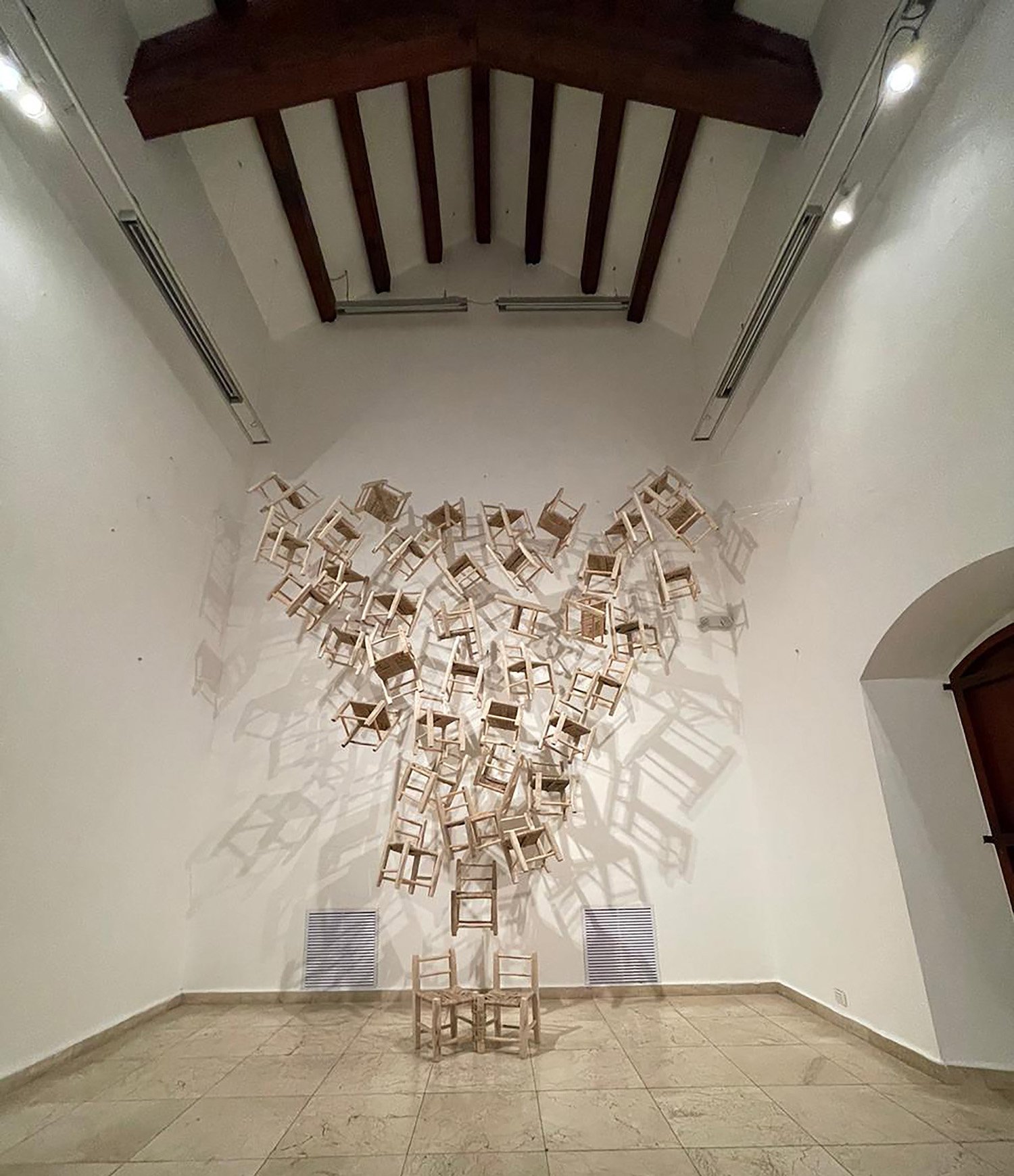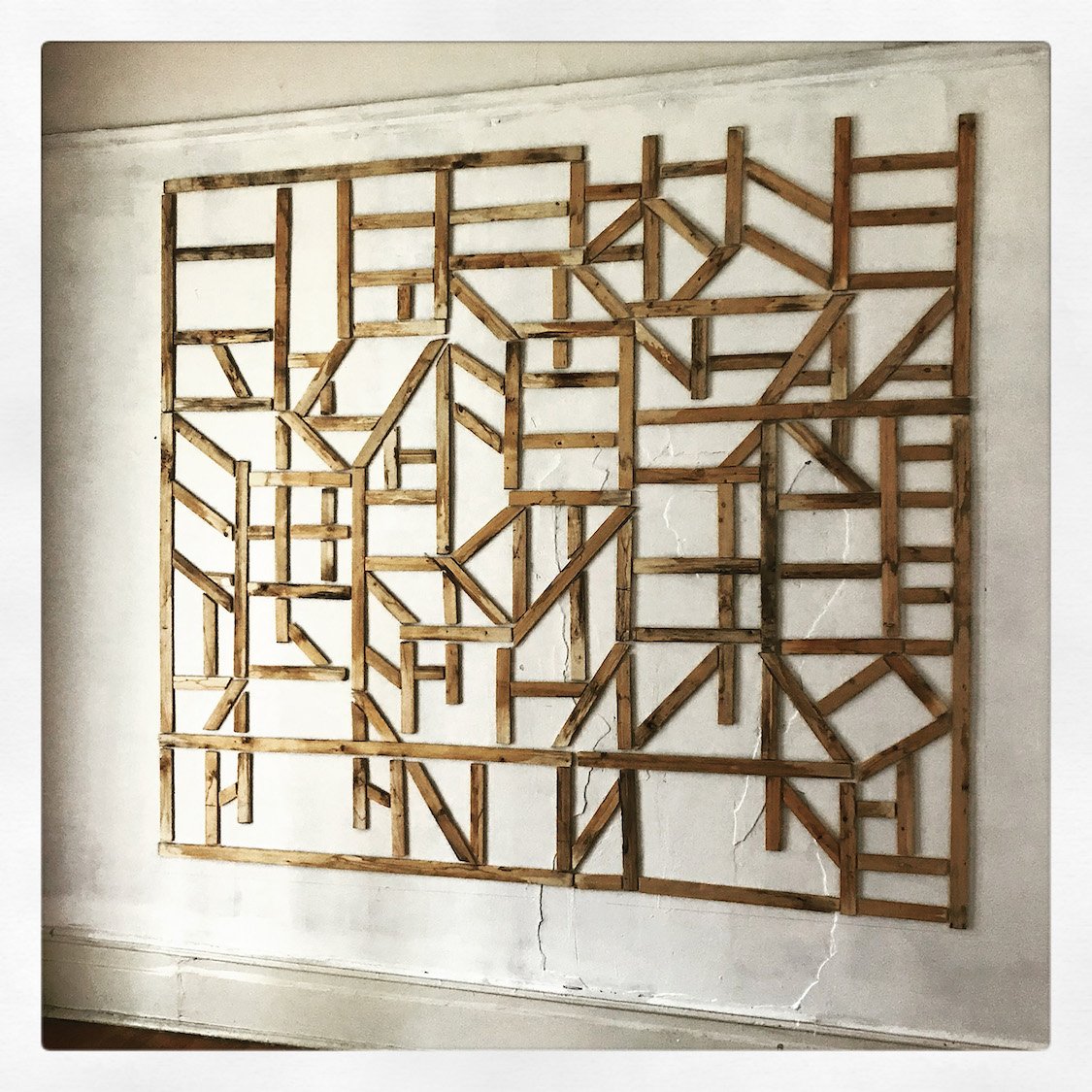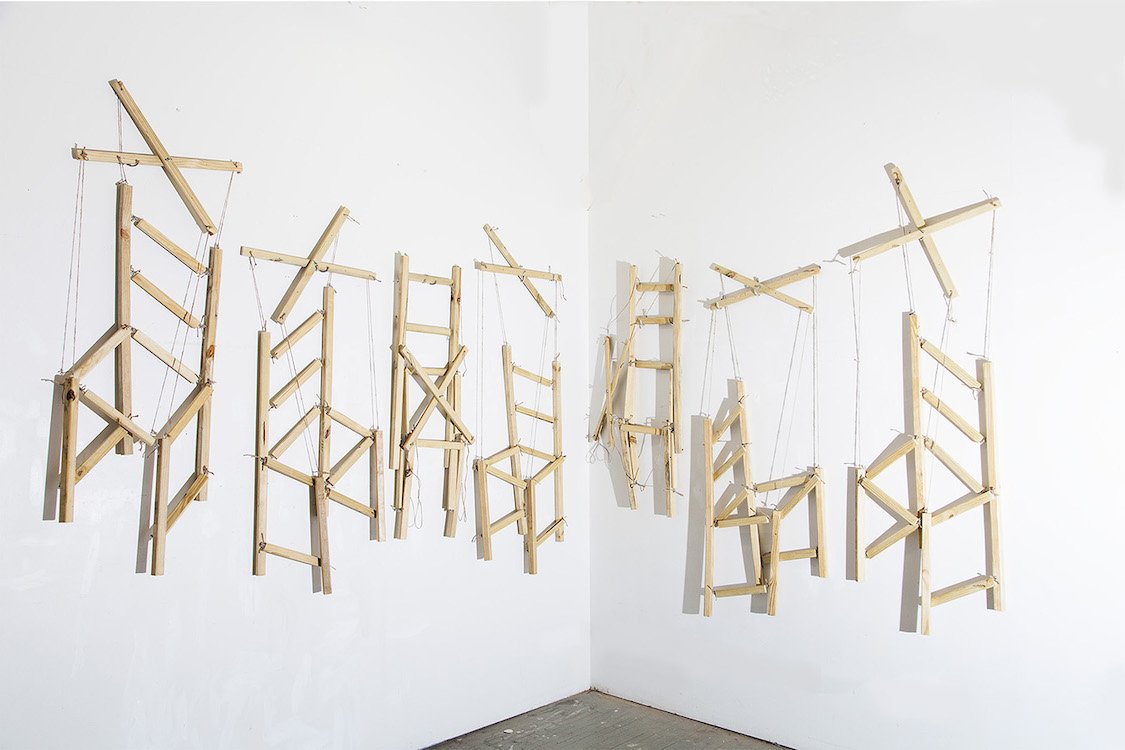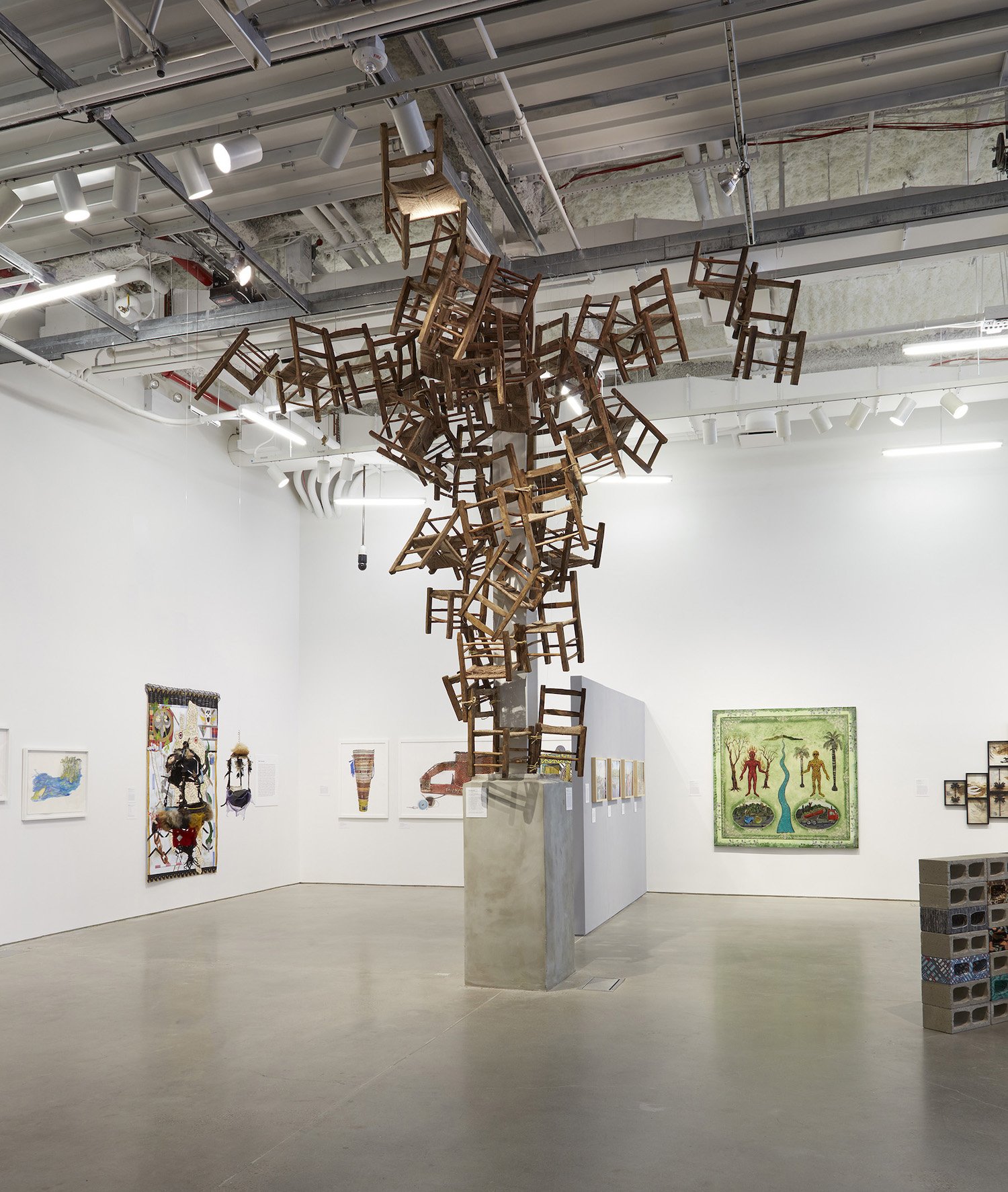iliana emilia García
Nicolás Dumit Estévez Raful Espejo Ovalles: Iliana, we met at Altos de Chavón/The School of Design as I was about to graduate and you were coming in as a student. Like me, you were trained as designer. In my case, I never practiced in this field, while you continue to move skillfully between the arts and the design fields. Tell me about it.
iliana emilia García: I love both, but I am aware of their differences. For me design is an external output while the arts are internal. Design keeps me informed about my surroundings while the arts are my personal world and protect me from the outside. While in design I work for a specific audience, in the arts I, myself, am the client.
NDEREO: I have to say that Altos de Chavón has been so pivotal to my development at many levels, including how I relate socially. I have to admit that I decided not to visit again and to be at peace with the memories of my time there, most of which were incredible. What is your connection to the school?
ieG: I have visited many times, taught a couple design workshops, etc... I have seen the changes over the years. While it stills holds the magic, it has also evolved into something else that I don’t recognize. I truly believe that our years were the golden years, the first 5 classes.
NDEREO: Another point of connection between us is the Island. We grew up in two very different cities. You, in Cosmopolitan Santo Domingo, and I in the more old-fashioned and provincial Santiago, yet there is a strong link, I feel, that ties us to the Island emotionally, culturally and spiritually. Can you talk about this?
ieG: This could be a very long answer! I think that our ties are beyond these specific places. Although we come from different cities, we are both rooted in history, family dynamics, education, culture, idiosyncrasies, diversity and a way of thinking. For sure, the Island, is our common playground and the geographical inspiration for so many projects and interests that we share, and yet we can also see beyond the labels of nationalism, and tribal societies. Our ideas of Dominicanisms are more a celebration of our diversity than a box in a checklist.
NDEREO: You have been exploring the symbolism that chairs carry. There are the drawings, photographs and installations that you make. Tell me about your first chair, the one you remember from your childhood? Mine is a rocking chair that my godmother Juanita Castro gave me.
ieG: Rocking chairs would be the that ones I remember. There are so many pictures of my mother with me on her lap en la mecedora–and my grandmother Baita doing her crossword puzzles after lunch. My great grandmother’s rocking chair is the one that I inherited. More than the object itself, it is the memory/image that the sitting triggers. For my installations (except for one or two), photographs and drawings, among others, I only use the handmade typical Dominican chair. It does not only take me back in time, but it carries a history longer than my memory. This kind of chair is a European design, combined with African weaving craft, and made with native woods from the island; the land of the Taínos. For me, the traditional Dominican chair is my history in one seat, as I am a result of the past–the chair is a perfect representation of this.
NDEREO: I say that chairs remind me of the non-human animal in me. They give me the opportunity to become a four-legged creature again, and when I take the time to sit. I also sit to meditate, to pray and to watch the world dance. What are your own interactions with chairs?
ieG: I have long conversations with them!!:) When I sit (if I sit), I usually have another empty chair next to me. Why? I guess because they are company, they also convey presence and absence at the same time. They have become instruments of my storytelling.
NDEREO: Many years ago, I bought a pair of ornate chairs belonging to a Catholic or Episcopal Church. To me they are more Catholic than Episcopal because of their exuberance. Are there any particular chairs in your home and what do they evoke for you?
ieG: Do you know that I don’t have any particular chair in my house? I do have a favorite spot in the couch, and a chair in the studio that have been with me for years. We still have our children-sized rocking chairs in Dominican Republic that we got when we were 3 or 4 years old. I love those!
NDEREO: During the last three or so years, I have been taking photographs of chairs in the South Bronx. Many of our communities here claim the streets and public spaces by bringing their chairs out. I love that. “The city belongs to me as much as it belongs to you,” seems to be the statement made in a gentle way that is not really confrontational. These chair actions in the South Bronx speak as well of Caribbean cultures, where so much happens outside. I would like to hear about your installations and the histories/herstories/theirstories informing them.
ieG: I love “claiming” the streets by bringing chairs out! That is so Caribbean! I think that the chairs in my work aim to establish a presence/identity in adopted places that have become ours. I don’t plant flags but I carry with me home/domesticity/intimacy/place with each one of the chairs. The work in general addresses how subjective distance is when we solely measure it with memories and interpretations; how our concepts of "here" or "there" do not belong to a specific map but to a web of happenings without a chronological order. By settling my Dominican handmade chair in a foreign land, I establish my presence, while also bringing with me my emotional history. Chairs in my series Unknown distances/Undiscovered Islands Settlements come in many sizes and many forces. Some are temporary; others more permanent, but both kinds seem to stop time for a moment. There are those chairs–dealing with the geographical– that endure a more physical placement/displacement and are specific to the sites. They can be explained as here, there, near and far. But there are also the chairs dealing with the emotional; the ones with no geography or body presence. They occur anywhere and without premeditation–as the heart moves like the wind, and asthe soul travels as far as our breath. There can be a misplacement when we try to capture the exact site for tenderness, for hope or for solitude. How well can we exactly remember where leave silence behind, and how expansive or narrow the space of silence is? I refer to where the distances are unknown to any measurements and everything is a new discovery–where the space between one and another is as far as our desire to be together, and as close as our differences. It may be almost impossible to tag where exactly our silence resides and where company begins–and how far our vision goes, and how blind we are regarding our own doings. Do we really know how far we are? How close we breathe? How much we need each other to survive? This is what we are, merely a site/a seat, not here not there, but in between”.
NDEREO: Which is your favorite spot to sit in New York City? In the Dominican Republic?
ieG: Always in front of water. Before 9/11 I would sit on a spot in Battery Park City overlooking the Hudson. Now in Brooklyn, I sit at the Brooklyn Bridge Park overlooking the East River–or in Red Hook where I can see the Verrazano, Ellis Island, Lady Liberty, and all the ships coming in and out of New York waters.
NDEREO: I thank you for taking the time to sit to answer these questions. May you always enjoy the comfort of a well-crafted chair.
ieG: You too! ¡Gracias! I am including two statements that further describe my practice. The first one in a more general way, and the second one, My Painting is a Book, expands on the use of a reason, an object, and a word across my body of work.
Unless stated otherwise in the credits above, photographs: iliana emilia garcía
ilianaeEmilia García / links to work and publications: Website / Instagram / facebook / twitter / Hyperallergic /Artsy / Smithsonian
To read statements click HERE
iliana emilia García (Born in Santo Domingo, Dominican Republic, 1970 ), is a painter, printmaker, and installation artist who works in big format drawings on canvas and paper, and escalating installations depicting her most iconic symbol: the chair. Her work often explores concepts of emotional history, collective and ancestral memory, and intimacy. A co-founder of the Dominican York Proyecto GRÁFICA, she holds an AAS from Altos de Chavón/ The School of Design, a BFA from Parsons School of Design | The New School, and a MA Biography and Memoir from The Graduate Center, CUNY. Her work has been reviewed in numerous art publications and catalogues. Iliana Emilia has been featured in solo and two-person exhibitions at the Art Museum of the Americas, Taller Boricua, Hostos Community College (all in New York City). She has been exhibited in group exhibitions at BRIC (Brooklyn, NY), Exit Art (New York, NY); No Longer Empty at Sugar Hill (New York, NY), The Smithsonian Museum of American Art (Washington, DC), El Museo del Barrio (New York, NY), Aljira Center of Contemporary Art, (Newark, NJ), Leonora Vega Gallery (New York, NY), Howard Scott Gallery (New York, NY), NOMAA (New York, NY), Joan Guaita (Spain), The 3rd Triennial Poli-Grafica (San Juan, Puerto Rico), Barnard College (New York, NY), Museo de Arte Moderno de El Salvador, as well as in Belgium among other places. Iliana Emilia’s work is included in the permanent collections of the Smithsonian American Art Museum (Washington DC), El Museo del Barrio (New York, NY), The Blanton Museum of Art (Austin, Texas), El Museo de Arte Moderno de Santo Domingo (Santo Domingo, Dominican Republic), and others. An edited monograph on her work iliana emilia Garcia: the reason / the word / the object, was published in 2020 by the Art Museum of the Americas, and edited by Olga U. Herrera, PhD. Her papers can be found at the Archives of American Art, Smithsonian Institution. She currently lives and works in Brooklyn, NY.






